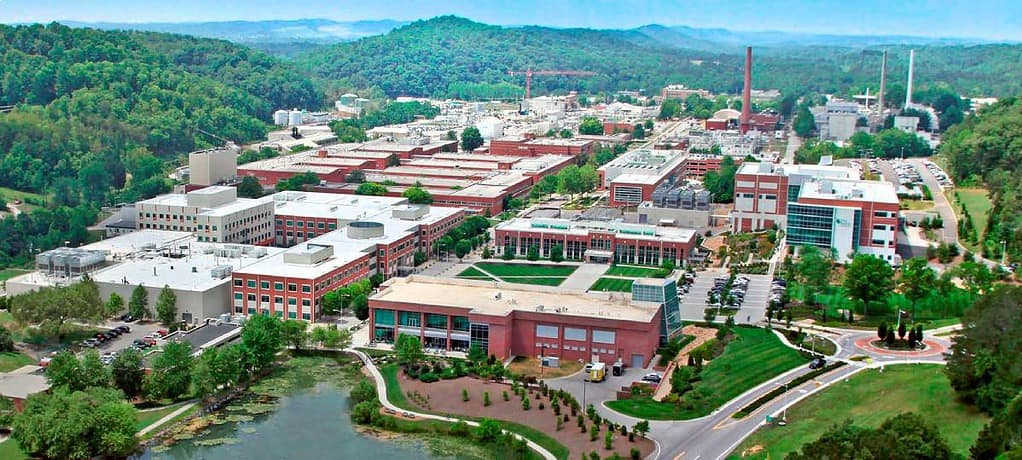To protect coastal communities from hurricanes, call the… coral reef veterinarian?
To understand stony coral tissue disease, USGS biologists peer through microscopes at tiny polyps and algal cells. But the impacts of the disease are far bigger.
It’s hurricane season. For people in coastal communities, that might mean gathering supplies and making an evacuation plan. For many USGS scientists, that means working with the National Weather Service to generate and update forecasts of coastal change. Long term, coastal cities might invest in infrastructure that protects against storms, while researchers gather and analyze data to improve future forecasts.
It’s mostly oceanographers and hydrologists whose research impacts hurricane preparedness. But other many other types of scientists that you might not associate with hurricanes play a role, too–including coral reef biologists.
Many coastal communities in the tropics have a less obvious hurricane preparedness tool hiding just beneath the waves: coral reefs. Coral reefs act as buffers, dissipating as much as 97% of the energy of incoming waves and protecting coastal communities from storms and flooding. Coral reefs off the coast of Florida protect more than 5,600 people, at an estimated value of $675 million per year.
There’s a problem, though. Corals aren’t doing too well. Many coral species are getting sick and dying from disease, climate change, and other threats. One of the recent major culprits in coral reef loss in the western Atlantic has been stony coral tissue loss disease, or SCTLD, which was first observed in southeast Florida in 2014 and has since spread throughout the Caribbean. This disease is characterized by rapidly progressing lesions that can kill a full coral colony in weeks.
If corals are sick, they can’t build healthy reefs–a 2023 USGS study in the Florida Keys found that the accretion potential of stony corals declined 70% in the time after the disease was first recorded there. And when coral reefs are degraded, they can’t protect coastal communities from storms. In Florida, the cost of the increased flood risk resulting from projected reef degradation was estimated at $823.6 million annually.
That’s why USGS biologists are working hard to investigate the causes of coral diseases and how they affect the health of coral reefs and reef ecosystems. Read on to learn about how these scientists studying tiny animals are contributing to long-term hurricane preparedness!
What are corals, anyway?
What are corals, anyway?
Yes, we said tiny animals. Coral reefs may look like plants or fuzzy rocks, but what you’re looking at when you look at a coral is a structure built by tiny animals related to jellyfish and sea anemones (that means the study of coral diseases is part of veterinary science). These coral polyps are very small, but they secrete calcium carbonate, forming structures in a wide variety of shapes and colors—our coral reefs.
That’s not all. Inside the corals are even tinier creatures: zooxanthellae. These aren’t animals or plants—they are type of single-celled algae called dinoflagellates. Dinoflagellates can be free-living plankton (some varieties are responsible for the phenomenon known as red tides) or live symbiotically in other organisms, which is what the zooxanthellae do, living inside the tissues of coral polyps. The whole setup is something like a nesting doll: zooxanthellae inside corals inside a calcium carbonate skeleton.
Zooxanthellae aren’t plants, but they do photosynthesize, providing corals with extra energy that they can use to build spectacular reefs. In turn, the zooxanthellae get a protected place to live. And this symbiosis provides the foundation for other beneficial relationships: the reefs provide habitat for an enormous diversity of fish and other marine organisms, as well as storm protection for coastal communities and ecosystems.
These relationships—from zooxanthellae to coral to reef to fish to humans—are critical to understanding why many corals are dying of disease, and why that disease has cascading effects across the ecosystem.
Perhaps the most well-known cause of coral loss is coral bleaching, which is also related to the coral-zooxanthellae symbiosis. Warmer water temperatures cause corals to expel the zooxanthellae causing the coral to turn white, hence the term bleaching. Disease has been, until recently, a less well-known and more poorly understood cause of coral loss.
Corals are susceptible to numerous diseases, but they can be difficult to distinguish without examining tissue samples under the microscope. In 2020, a team of scientists including USGS’s Thierry Work microscopically examined the tissues of eight species of coral from the Florida Reef Tract that showed signs of stony coral tissue loss disease. It turns out that the disease results from a breakdown in the symbiosis between corals and their zooxanthellae. They found that signs of disease first appeared in the zooxanthellae, then progressed to death of the tissues of the coral host.
Researchers aren’t yet sure what the fundamental cause of the disease is. It could be a microbe that infects the zooxanthellae, or a contaminant. Environmental stress could lead the zooxanthellae to produce toxic compounds that they wouldn’t normally produce.
It’s also not clear how the disease spreads, though its association with ports has indicated that ships might be the culprit. USGS scientists Christina Kellogg and James Evans have conducted experiments with healthy and diseased corals in controlled environments. They found a distinct “disease signal” in microbial biofilms that formed on stainless steel exposed to diseased corals, suggesting that stony coral tissue loss disease could potentially spread via biofilms growing on the undersides of ships.
Little organisms, big changes
Little organisms, big changes
While much of the research focuses on the roots of stony coral tissue loss disease and its spread, USGS ecologist Kevin Lafferty studies the disease from a different angle: how does the disease affect the broader structure of coral reefs and all of the living things that rely on the reef habitat? In a study published in May of this year, Lafferty and collaborators used two big datasets of fish and benthic communities (corals, algae, and sponges) and statistical modeling to explore how the spread of the disease affects the larger ecosystem.
The study found that the disease changed the ecosystem, but different kinds of organisms responded in different ways, with some declining and others increasing in abundance. As expected, corals susceptible to the disease declined in abundance, as did some kinds of algae, while cyanobacteria, fire coral, and macroalgae increased. The models predicted that some fish species will decline as the disease spreads, while others will be unaffected or even increase in numbers. The findings can help researchers and conservationists identify which reefs are most at risk of ecosystem-level impacts and what changes might occur as stony coral tissue loss disease spreads.
There’s still a lot to learn about stony coral tissue loss disease, but USGS scientists and partners are tackling the problem at all levels. From symbiotic algae to coral polyp on up to its effects on reef degradation, fish populations, and hurricane protection for coastal communities, USGS scientists and collaborators continue to explore the medical mystery beneath the waves.
Get Our News
These items are in the RSS feed format (Really Simple Syndication) based on categories such as topics, locations, and more. You can install and RSS reader browser extension, software, or use a third-party service to receive immediate news updates depending on the feed that you have added. If you click the feed links below, they may look strange because they are simply XML code. An RSS reader can easily read this code and push out a notification to you when something new is posted to our site.
This United States Geological Survey news article "To protect coastal communities from hurricanes, call the... coral reef veterinarian?" was originally found on https://www.usgs.gov/news




